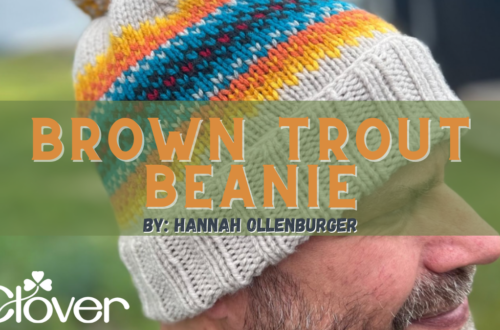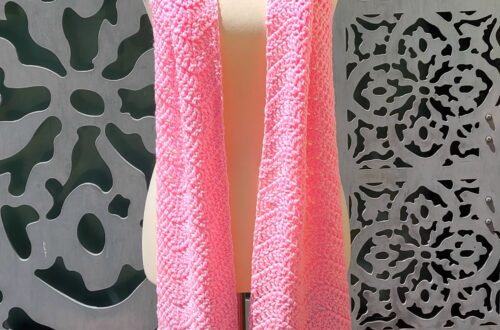Making a Coaster Set and Nest (QUOE TIPS)
 Of all the small scale projects that I am apt to create, coasters are some of my favorite.
Of all the small scale projects that I am apt to create, coasters are some of my favorite.
Maybe it’s the fact that you can usually get one done in a sitting or the fact that I always have a cup of coffee in hand and wooden tables that need protecting. Either way, I am constantly making them in one form or another. They are also a perfect quick project to test a technique out, as is the case for these Hana-Ami Florettes! If you have never used this unique and fun tool, this is a great project to start with.
Ae you ready to dive in? Lets get started!
Supplies:
- Hana-Ami Flower Loom- Art. No 3146
- Thread Clipper “Kuroha”- Art. No 415
- Amour Crochet Hook H (5.0mm) – Art. No 1047/H
- Darning Needle Set – Art. No 339
- Yarn Threader – Art. No 3142
- Worsted Weight Yarn (Sample uses Valley Yarns Berkshire)

Begin by locking the largest circle loom for the Hana-Ami Flowers in place. Take your working yarn, and place it into one of the middle slit points from the sides of the loom base. You may find that your yarn needs to be knotted at the end to keep it from sliding out.


Following the photos below, begin wrapping your yarn around every other peg of the loom. Keep your tension tight, and be sure to match up pegs evenly to the peg directly across. If using a lighter weight yarn, you may want to go around the loom twice, or even three times. If you want a fuller middle of your coasters, wrap your yarn around every peg, but keep in mind you will have to make adjustments to the crochet border.





Once you have returned to the starting peg, snip your working yarn leaving about an inch and a half to tie. Tie both ends together using an overhand knot. Do not trim excess. Carefully separate loom from base. Adjust middle of woven yarn to be even if needed.


Form a slipknot with new yarn. take crochet hook and catch slipknot from the back of the work around the strands of yarn from the peg directly opposite to the starting peg. Slip stitch around peg strands. Slip stitch around each of the twelve pairs of peg strands individually.



Snip yarn after last stitch and draw through about four inches to the front of the work. Take your darning needle and yarn threader, and thread tail of yarn through. Pass darning needle under first stitch created, then pass needle through the middle of last stitch worked. Pull needle off strand. Do not weave in ends.



Now you are safe to remove your piece from the loom. Form slipknot with new yarn and slip stitch onto the midpoint of the same strand you started from in the previous step. Chain three stitches, then single crochet one stitch in the next strand. Repeat this process until you arrive back at your first stitch. Slip stitch into it. Chain one, and single crochet in every stitch around. You will end with 48 stitches. Finish with the same technique as previous step. Weave in all ends and your coaster is complete. Create six before moving to nest.







Nest will be created using every step of coaster, stopping right before fastening off and weaving ends. Slip stitch into last stitch of first round and chain one. Single crochet into next three stitches, then single crochet 2 stitches in next stitch. Repeat around. You will end with 60 stitches. Slip into first stitch of round. For the next eight rounds, begin by chaining one, then single crochet in every stitch, slipping into first stitch of round when complete. Finish using same technique as coasters. Weave in all ends.





Now we have successfully completed this project! These coasters have many applications, and can be used as a motif for a number of crochet projects. To spice it up, try changing yarn colors every time you join a new yarn. Be sure to tag Clover and me in any project photos, we’d love to see them!
Until next time, break the status.

Follow what Quayln is up to next on his Blog | Instagram | Facebook | Pinterest | YouTube | Ravelry
Stay connected with Clover on Facebook | Twitter | Instagram | Pinterest | YouTube | Ravelry



